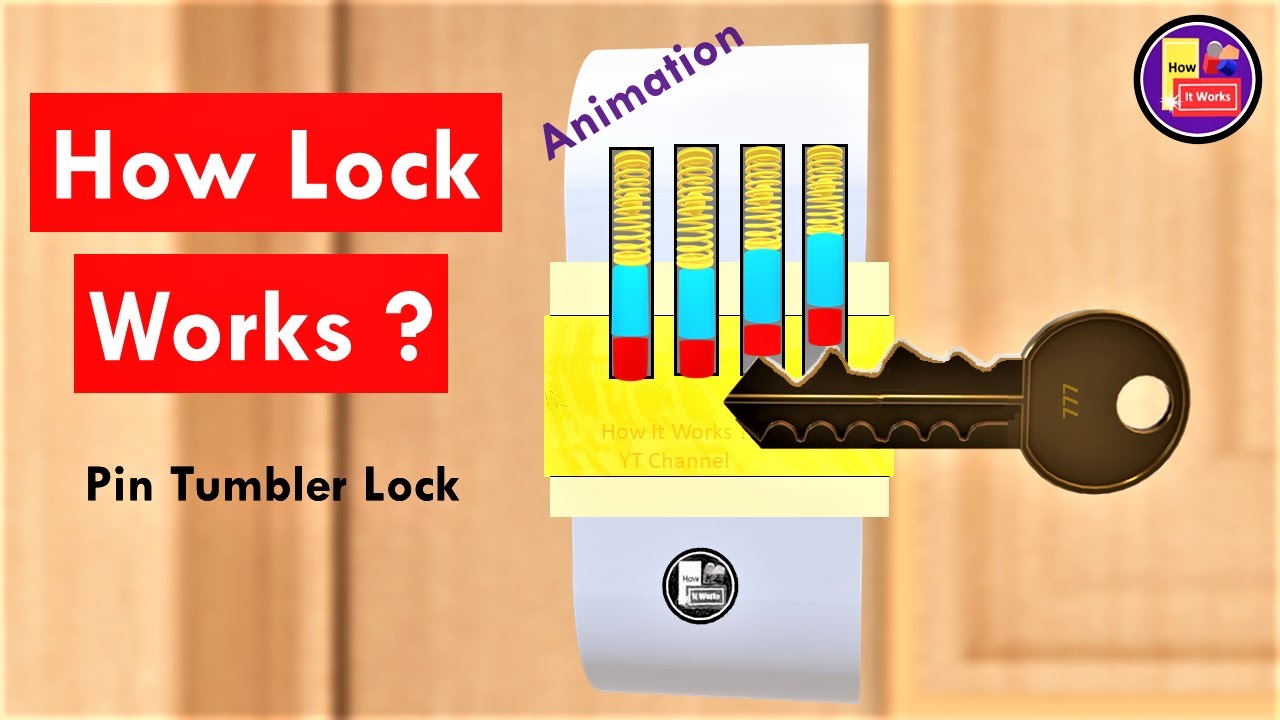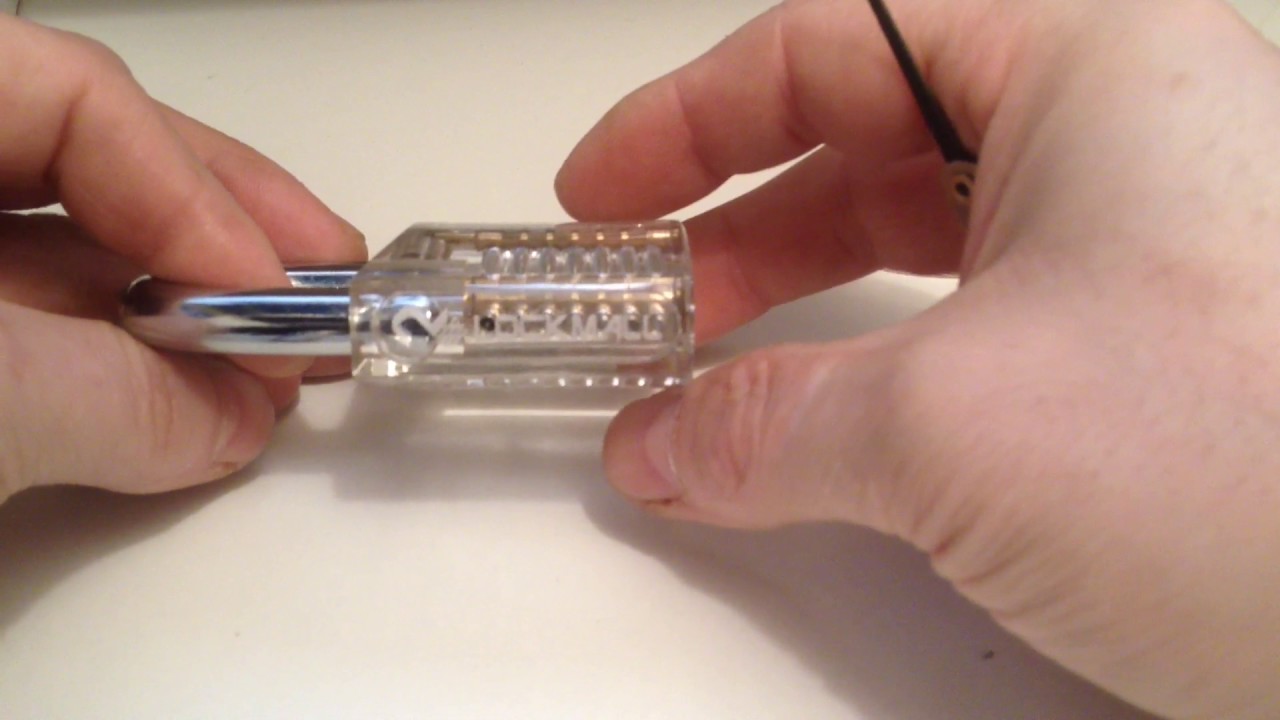Lock picking, specifically using pins, is an intriguing skill that combines technique and patience. Have you ever found yourself locked out of your home or office? Understanding pin tumblers can be a game-changer! Pin tumbler locks are one of the most common types of locks, and once you grasp the basics of how they work, you'll see that picking them isn't as daunting as it may seem.
The essence of pin picking is to manipulate the pins inside the lock. Each pin must be raised to the correct height for the lock to turn freely. Whether you're a curious novice or someone who's just looking for a handy trick up your sleeve, having a grasp of pin picking can be an invaluable skill. And, luckily, there are a plethora of resources available, including Dailymotion videos that offer visual guidance. Let's delve into how you can start your journey into the world of pin lock picking.
Essential Tools for Pin Lock Unlocking

Before you dive into the hands-on practice of lock picking, it's essential to gather the right tools. Having the correct equipment will make the learning process smoother and more effective. Below is a list of the essential tools you'll need:
- Lock Picks: These are the most fundamental tools for picking locks. A basic set will usually include various shapes like hooks and rakes.
- Tension Wrench: This tool applies tension to the lock, allowing the pins to be manipulated. It's equally crucial as the lock picks.
- Practice Locks: Getting a few practice locks will enable you to hone your skills before attempting to pick a real lock.
- Flashlight: Lighting up the lock can help you see the internal mechanism clearly, especially in low-light conditions.
For beginners, it’s a good idea to start with a basic pick set that includes a tension wrench and a few different picks. As you advance in skill, you can explore more specialized tools.
Want to see these tools in action? Check out some Dailymotion videos that showcase the lock picking process, providing visual representation and tips to enhance your understanding. Remember, practice makes perfect, so don't be discouraged! Happy picking!
Also Read This: Don’t Breathe 2 Online Free on Dailymotion: How to Watch
Understanding the Mechanics of Pin Tumbler Locks

If you're curious about how a pin tumbler lock works, you're not alone! These locks are like little puzzles, and understanding their mechanics can help you unlock them with ease. At the core, a pin tumbler lock consists of several key components that work together to keep things secure.
Here’s a breakdown of the main parts:
- Key: This is the piece that you use to unlock the lock. It has specific cuts that align with the pins inside.
- Shell: The outer casing that houses all the internal parts of the lock.
- Pins: The small metal pieces that sit inside the cylinder. They come in pairs, consisting of a top pin and a bottom pin.
- Cylinder: The part you insert the key into. When the correct key is inserted, it pushes the pins up to the shear line.
- Shear Line: This is the critical line where the pins must align to allow the cylinder to turn freely and unlock.
When you insert the correct key, it pushes the bottom pins up to the shear line while preventing the top pins from rising. This locks the cylinder in place. If the wrong key is used, the pins won’t align properly, and the lock will remain secured.
Understanding this mechanism not only helps you appreciate the intricacies of lock engineering but also gives you an advantage when trying to unlock them. Knowing how each component works together can guide you in the right direction, especially when watching Dailymotion videos that demonstrate the unlocking processes!
Also Read This: Learn How to Do a French Braid with Dailymotion Step-by-Step Videos
Step-by-Step Guide to Unlocking with a Pin
Unlocking a pin tumbler lock using a pin may sound daunting, but with a little patience and the right technique, you can master it! Here’s a step-by-step guide that makes the process easier:
- Gather Your Tools: You’ll need a tension wrench and a pin or pick tool. These can often be found at local hardware stores or online.
- Insert the Tension Wrench: Place the tension wrench into the bottom of the keyhole. Apply a slight turning pressure in the direction the lock opens.
- Insert the Pin Tool: Gently insert the pin tool into the top section of the lock. You should feel the pins inside; they're waiting to be manipulated.
- Feel for the Pins: As you push up on the pins with the tool, listen and feel for a click. This indicates that the pin has been set to the shear line. Do this slowly and carefully.
- Continue Applying Tension: Maintain consistent tension with your wrench as you work on setting each pin. If you release the tension too much, the pins might drop back down.
- Repeat Until All Pins are Set: Work your way through the pins one by one. Depending on the lock, this may take a few tries.
- Turn the Cylinder: Once all the pins are set at the shear line, turn your tension wrench to unlock the lock. Voilà!
Remember, practice makes perfect! Don't be discouraged if it doesn’t work on your first try. Watching Dailymotion videos can provide helpful visual demonstrations that enhance your understanding and confidence in this skill. Happy unlocking!
Also Read This: Learn to Make a Ninja Star with Paper: A Fun DIY Guide on Dailymotion
Using Dailymotion Videos for Visual Aid
If you’re looking to unlock a lock using a pin, using visual aids can make all the difference. Dailymotion is a fantastic platform where you can find a plethora of instructional videos demonstrating various unlocking techniques. Watching someone perform these techniques can make the process much clearer than just reading about it.
Here’s how you can effectively utilize Dailymotion videos:
- Search for specific terms: When you dive into Dailymotion, try using precise keywords like “unlocking locks with a pin” or “lock picking tutorials.” This will yield the most relevant results.
- Check the credibility of the creator: Look for videos created by experienced locksmiths or DIY specialists. Their expertise can significantly enhance your learning.
- Watch multiple videos: Different instructors may have unique techniques or tips. Watching several videos can give you a more rounded understanding of the process.
- Take notes: While watching, jot down key points, especially about hand positions, pin placements, or tools needed. Having a reference can be handy.
- Pause and practice: Don’t be afraid to pause the video and practice along. Repetition is key in mastering any technique.
Incorporating visual learning via Dailymotion can streamline your journey to mastering the art of unlocking locks with pins. So, get your tools ready and let’s start watching!
Also Read This: How to Download Adobe Photoshop 7.0 from Dailymotion
Common Mistakes to Avoid When Unlocking Locks
| Error | Description | Solution |
|---|---|---|
| Using the wrong pin size | Pins that are too thick or too thin can lead to failures during the unlocking process. | Select a pin that fits snugly into the lock. |
| Forcing the pin | Pushing too hard can damage the lock or the pin itself. | Apply gentle pressure and feel for the pins moving. |
| Not having enough light | Insufficient light can make it difficult to see the inner workings of the lock. | Choose a well-lit area or use a flashlight. |
| Skipping practice | Trying to unlock a lock without proper practice can lead to frustration and failure. | Set aside time to practice on a variety of locks before attempting real ones. |
| Ignoring lock maintenance | Dirt and debris can interfere with the mechanism, causing difficulties. | Regularly clean and lubricate your locks to keep them functioning smoothly. |
By avoiding these common mistakes, you’ll find yourself more confident and successful when using a pin to unlock locks. Remember, a little patience and practice go a long way in mastering this skill!
Also Read This: What Is Inside Gaming? Exploring the Gaming Content Available on Dailymotion
7. Safety and Legal Considerations
When it comes to unlocking a lock using a pin, it’s essential to approach the process with caution and awareness. While it can be a handy skill to have, there are some vital safety and legal considerations to keep in mind that could protect you from mishaps or legal trouble down the line.
First and foremost, ensure that you only attempt to unlock locks that you own or have explicit permission to access. Using these techniques on locks that are not yours is not only unethical but also illegal. Always ask for permission if you're unsure, as it’s better to be safe than sorry.
Here are some key safety tips to consider:
- Use appropriate tools: Make sure you’re using the correct type of pin or picking tools specifically designed for the lock you are working on.
- Wear safety gear: If you're working with a complicated lock or in a potentially hazardous environment, don’t forget to wear safety glasses or gloves.
- Be mindful of your surroundings: Ensure that no one is observing you, as this could raise suspicions or lead to misunderstandings.
In terms of legal considerations, legislation can vary by region, but generally, here are some pointers you should keep in mind:
- Lockpicking laws: Familiarize yourself with local laws regarding lockpicking and unauthorised access to property.
- Consequences of misuse: Understand the potential penalties you could face for misuse, such as fines or even jail time.
Keeping these safety and legal considerations in mind will help ensure that your experience is not only successful but also responsible. Always prioritize ethics and lawfulness in your efforts.
8. Conclusion and Additional Resources
In conclusion, unlocking a lock using a pin can be an incredibly useful skill, especially in everyday situations where you might find yourself locked out. Remember to go at your own pace and practice makes perfect! Understanding the mechanics behind the lock can significantly ease the process, and with experience, you will get better and more efficient.
If you’re interested in diving deeper into this topic, here are some additional resources that can guide you:
- Online tutorials: Check sites like YouTube or Dailymotion for instructional videos where skilled individuals demonstrate various lock-picking techniques.
- Books and guides: There are many excellent books available that explain the theory behind how locks work and the tools needed for pin-tumbling locks.
- Lockpicking forums: Engage with communities online where enthusiasts share tips, experiences, and resources related to lockpicking.
As a final note, remember to practice responsibly! There’s no doubt that unlocking locks can sometimes feel like an art, so enjoy the journey and keep learning. Don’t forget to share your thoughts and experiences in the comments or through your social media channels! Happy unlocking!
 admin
admin








